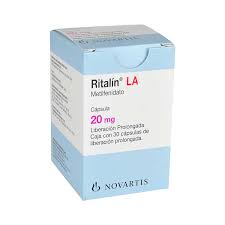OxyContin: Everything You Need to Know
OxyContin is one of the most recognized pain relief medications. Designed to manage severe and chronic pain, it is often prescribed when other pain relievers fail. However, OxyContin is not without controversy due to its potential for misuse and addiction. This article provides a comprehensive look at OxyContin, including its uses, risks, and how to get it safely and legally.
What Is OxyContin?
OxyContin is a brand name for a medication containing oxycodone , a powerful opioid. It’s formulated as an extended-release tablet, meaning it provides long-lasting pain relief for up to 12 hours. Doctors commonly prescribe it for patients suffering from:
- Cancer-related pain
- Chronic back pain
- Severe injuries or surgeries
Unlike immediate-release painkillers, OxyContin releases the drug slowly over time, providing consistent relief.
How Does OxyContin Work?
OxyContin works by binding to opioid receptors in the brain and spinal cord. This process blocks pain signals, offering relief to the patient. Additionally, it can produce feelings of relaxation and well-being, which is one reason why it is sometimes misused.
Key Benefits of OxyContin
- Effective Pain Management : It is highly effective for severe, persistent pain.
- Extended-Release Formula : Fewer doses are required compared to immediate-release alternatives.
- Improved Quality of Life : For chronic pain sufferers, it can significantly improve daily functioning.
Potential Risks and Side Effects
Like all medications, OxyContin comes with risks. The most common side effects include:
- Drowsiness
- Nausea
- Constipation
- dizziness
More serious risks include:
- Addiction : Even when taken as prescribed, OxyContin has a high potential for dependency.
- Overdose : Misusing or taking higher doses can lead to life-threatening complications.
- Withdrawal Symptoms : Sudden discontinuation may result in symptoms like anxiety, sweating, and severe discomfort.
How to Use OxyContin Safely
To minimize risks, always follow your doctor’s instructions. Here are some tips:
- Take It as Prescribed : Never take more than the recommended dose.
- Avoid Alcohol : Mixing OxyContin with alcohol increases the risk of respiratory issues.
- Store Securely : Keep the medication in a safe place to prevent misuse by others.
- Don’t Share : This drug is tailored to individual needs and can be harmful to others.
For more detailed guidelines, check the official prescribing information.
Where to Buy OxyContin Legally
Purchasing OxyContin should only be done through legal and reputable sources. Here’s how:
- Doctor’s Prescription : You must have a valid prescription to buy OxyContin.
- Licensed Pharmacies : Use well-known pharmacies such as Walgreens, CVS, or Rite Aid.
- Online Pharmacies : Ensure the pharmacy is certified by the National Association of Boards of Pharmacy (NABP).
Be wary of online vendors offering OxyContin without a prescription. Such practices are illegal and dangerous.
Alternatives to OxyContin
If you’re concerned about the risks, consider discussing these alternatives with your doctor:
- Non-Opioid Pain Relievers : Ibuprofen, acetaminophen, or naproxen.
- Physical Therapy : Can help manage pain through movement and exercise.
- Prescription Alternatives : Medications like tramadol or nerve pain relievers (eg, gabapentin).
- Holistic Approaches : Acupuncture, mindfulness, and chiropractic care may also help.
Combating the Stigma Around OxyContin
While the opioid crisis has highlighted the dangers of misuse, it’s essential to understand that OxyContin has legitimate medical uses. When taken responsibly, it can greatly improve the quality of life for individuals with severe pain. Healthcare providers play a critical role in educating patients about safe use.
Finding Support
If you or someone you know is struggling with OxyContin dependency, there are resources available:
- SAMHSA Helpline : HELP for confidential support.
- Local Rehab Centers : Seek treatment programs near you.
- Support Groups : Groups like Narcotics Anonymous offer community and guidance.
Final Thoughts
OxyContin is a powerful tool for managing pain but comes with significant responsibilities. Always consult your doctor before starting or stopping the medication. By staying informed, you can make safer, more effective decisions about your health.
For more information about pain management and related topics, visit trusted medical resources like WebMD or Mayo Clinic.





John (geverifieerde eigenaar) –
Good service.
Brandon –
When will you be coming to my city